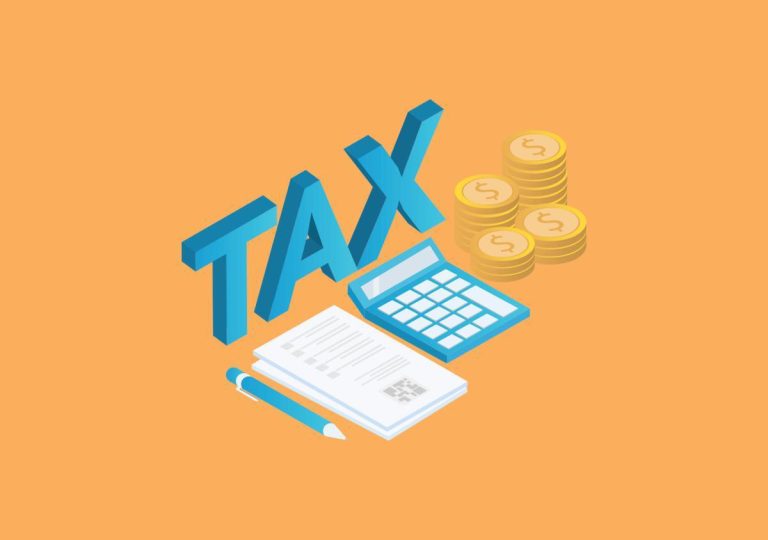The Inland Revenue Department (IRD) has recently updated Departmental Interpretation and Practice Note No. 1 (revised DIPN 1) which deals with the valuation of stock-in-trade and the taxation of long-term construction contracts, property development and property investment.
At the outset, revised DIPN 1 indicates that where the accounts of a person are drawn up in accordance with the ordinary principles of commercial accounting and are in conformity with the Inland Revenue Ordinance (IRO), no further tax adjustments are required or permitted. Revised DIPN 1 cites CIR v. Secan Ltd & Another (2000) 3 Hong Kong Court of Final Appeal Reports (HKCFAR) 411 in support of this position.
However, the accounting profits or losses would nonetheless need to be disregarded for tax purposes under the two cardinal tax principles established in Nice Cheer Investment v. CIR (2013) 16 HKCFAR 813: (i) “profits” connotes realized but not unrealized profits; and (ii) neither profits nor losses can be anticipated.
HKFRS 15
Recognition of revenue
Before Hong Kong Financial Reporting Standard (HKFRS) 15 Revenue from Contracts with Customers became effective on 1 January 2018, revenue recognition of long-term construction contracts, including contracts for the pre-sale of units of property development projects, was governed by several accounting standards and interpretations.
Some taxpayers have expressed the view that the variable consideration of a customer contract, recognized as revenue in the accounts under HKFRS 15, may represent unrealized profits. As a result, such consideration should not, based on the principles established in the Nice Cheer case, be taxable until the amount is contractually due.
Under HKFRS 15, a person has to recognize variable consideration as revenue when performance obligations are satisfied, and it is highly probable that a significant reversal in the amount of cumulative revenue recognized will not occur as a result of a change in the estimate of the variable consideration.
Revised DIPN 1 notes that while an element of estimation may be involved when an amount of variable consideration under a customer contract is recognized as revenue, the amount so recognized would nonetheless be taxable, realized profits or losses.
The IRD has also previously indicated that unlike notional year-end revaluation gains in respect of listed securities held for trading purposes, such as in the Nice Cheer case, variable consideration recognized as revenue under HKFRS 15 stems from the performance of a customer contract which is an actual business transaction. As such, any amount so recognized cannot generally be regarded as being unrealized profits.
Imputed interest
Under HKFRS 15, a contract is considered to contain a significant financing component if the timing of payments agreed to by an entity and its customer under a contract (either explicitly or implicitly) provides a significant benefit as regards the financing of the transfer of the goods or services to the entity or the customer.
Where a significant financing component is involved, an entity is required to present the effect of financing (either interest income or expense) separately from the customer contract revenue, and thereby account for the effects of the time value of money.
Revised DIPN 1 states that such imputed interest would be disregarded for tax purposes. This is because the legal form of a transaction generally takes precedence over its economic substance for tax purposes, i.e. an entity receiving advance or deferred payments from a customer has no legal obligations or rights to pay or receive interest to or from the customer.
As such, tax adjustments will need to be made in tax computations to exclude such notional interest income or expense recognized under HKFRS 15.
Taxpayers who wish to better understand how such tax adjustments are to be made can refer to examples 3 and 4 of revised DIPN 1.
Transitional adjustments
In the year a new accounting standard such as HKFRS 15 is first adopted, entities are generally required to account for the transitional adjustments under either of the following two methods:
(a) Full retrospective method: retrospectively to each prior reporting period presented in accordance with Hong Kong Accounting Standard (HKAS) 8 Accounting Policies, Changes in Accounting Estimates and Errors; or
(b) Modified retrospective method: retrospectively with the cumulative effect of initially applying the relevant accounting standard at the date of initial application.
Regardless of the method adopted, revised DIPN 1 indicates that any upward or downward transitional adjustments which are revenue in nature would be taxable or deductible in the year of assessment for which the accounting standard or policy is first adopted. This would be the case notwithstanding that the adjustments are not reflected in the profit and loss account but in the opening balance of the retained earnings for the year concerned. Revised DIPN 1 cites Pearce v. Woodall-Duckham [1978] 51 TC 271 in support of such tax treatment.
HKFRS 16
The IRD has also recently published guidance titled Profits Tax Treatment of Leases Where HKFRS 16 Applies on HKFRS 16 Leases.
Depreciation for ROU asset and imputed interest on leased liability
Under HKFRS 16, the balance sheet of a lessee of an operating lease would recognize a right-of-use (ROU) asset representing their right to use the underlying leased asset and a lease liability representing the present value of the future lease payments that the lessee is obliged to pay.
Depreciation charges for the ROU asset and the imputed interest on the lease liability would be reflected as an expense in the profit and loss account of the lessee of an operating lease. In other words, the accounting treatment reflects the economic substance of the transaction as being the lessee acquiring a ROU asset for use over the term of the lease.
Notwithstanding the aforesaid accounting treatment of an acquisition of asset, the guidance indicates that where the lease concerned is in legal form an operating lease, the combined depreciation charges for the ROU asset and imputed interest charged to the profit and loss account represents rentals for the recurrent use of the asset. As such, the two amounts as recognized in the accounts on an accrual basis are both revenue in nature and are tax deductible. This would be the case regardless of whether the two amounts represent lease payments that contractually fall due in the accounting period concerned.
In straightforward cases, the total amount of the depreciation of the ROU asset and the imputed interest on the related lease liability as recognized in the accounts will equal the total amount of the contractual lease payments over the term of a lease. However, the two total amounts may not be equal in one particular accounting period.
Given the matter is essentially only a timing issue, the guidance indicates that, where no element of tax avoidance is involved, the IRD would also accept taxpayers instead claiming tax deductions consistently based on the lease payments that contractually fall due in the years of assessment concerned.
Impairment loss of a ROU asset
HKFRS 16 requires a lessee to apply HKAS 36 Impairment of Assets to determine whether a ROU asset in respect of an operating lease is impaired and to account for any impairment loss identified.
Where an impairment indicator is present, e.g. business operations are significantly curtailed or disrupted due to the coronavirus pandemic, an entity needs to estimate the recoverable amount of its ROU asset. This would involve the entity estimating the net cash flows expected to be generated from the use of the ROU asset over its remaining useful life. Impairment losses arise where the carrying amount of the ROU asset exceeds its recoverable amount.
The guidance apparently presumes that such an impairment loss would only represent anticipated losses in most cases and, as such, would not be tax deductible based on the principles established in the Nice Cheer case.
However, such an impairment loss would also reduce the carrying value of the ROU asset, the depreciation of which would have otherwise represented part of the total rental expense charged to the profit and loss account and be deductible for tax purpose.
In other words, the depreciation charges in respect of the ROU asset, after its carrying value is reduced by the impairment loss, together with the imputed interest in respect of the related lease liability, would now only represent part of the total rental expense actually incurred. Such part of the depreciation charges on ROU asset and the imputed interest on the related lease liability combined would be tax deductible.
As such, the guidance indicates that the IRD would allow the impairment loss to be spread over the remaining term of the lease on a straight-line basis for tax deduction. Similarly, if the impairment loss is subsequently reversed, the reversal would likewise be spread over the then remaining term of the lease on a straight-line basis for tax assessment.
The combined effect of allowing (i) the tax spreading of an impairment loss and any subsequent reversal in the aforesaid manner; and (ii) the tax deduction of the depreciation charges in respect of the remaining carrying value of the ROU asset and the imputed interest on the related lease liability, would then approximate the total rental expense actually incurred for each of the years of assessment concerned.
Fair value changes in respect of sub-leasing an operating lease valued as an investment property
Under HKFRS 16, if an operating lease is sub-leased by an entity to another party (i.e. the entity becomes an intermediate lessor), the entity is required to account for the head lease and the sub-lease as two separate contracts.
Where the entity classifies the sub-lease as an operating lease, the entity would retain the lease liability and the ROU asset pertaining to the head lease. If the ROU asset in respect of the head lease meets the definition of an investment property, the entity can apply the fair value model to the ROU asset in accordance with HKAS 40 Investment Property, i.e. the ROU asset would be valued based on its market value at each year-end, with any change in value being charged to the profit and loss account. As such, unlike the cost model, there would be no depreciation charges in respect of the ROU asset.
The guidance indicates that such fair value changes in respect of the head lease would not however be taxable or deductible. This is because such gains or losses would not, based on the principles established in the Nice Cheer case, represent realized profits or losses.
Nonetheless, in order to approximate the rental expense actually incurred that would otherwise have been reflected through depreciation charges in respect of the ROU asset, the guidance indicates that the amount of the ROU asset as initially recognized would generally be allowed to be spread over on a straight-line basis over the term of the head lease for tax deduction purposes. Thereby, the ROU asset together with the related imputed interest are both deductible over the term of the lease.
Or alternatively, the claims for tax deduction can be made consistently based on the amounts of lease payments that contractually fall due in the years of assessment concerned.
For a fuller understanding of the tax adjustments required, taxpayers can refer to example 3 of the guidance which illustrates with numerical figures of the accounting entries involved in such a case.
Commentary
We welcome the IRD’s explanation of the interaction of the relevant accounting standards with the tax laws, duly supported by extensive case-law authorities.
Revised DIPN 1 and the guidance indicate that while it is matter of law whether a profit constitutes profits falling within the scope of charge under the IRO, the timing of when such a profit arises is more a matter of fact. In the latter respect, the evidence of accounts prepared under generally accepted accounting principles (GAAP) such as those applicable to the recognition of variable consideration as revenue under HKFRS 15 would be persuasive.
Similarly, the evidence of accounts prepared under GAAPs such as those under HKFRS 16 would also be persuasive for determining the timing when an expense is incurred for tax purposes.
Nonetheless, while an impairment loss in respect of an operating lease similar to the one discussed above would generally represent anticipated losses which may not be ascertainable with sufficient accuracy, and hence not be deductible under the principles established in the Nice Cheer case, there could be exceptions. For instance, in the United Kingdom case Herbert Smith v. Honour 72 TC 130, the provision for losses in respect of vacated office premises that were sub-let for the entire remaining term of the leases at a rent substantially below the rent payable by the taxpayer, was held to be deductible.
The above indicates that whether and how tax adjustments are made can be complicated in certain circumstances. Taxpayers should seek professional advice where necessary.
This article is contributed by Jo An Yee, International Tax and Transaction Services Partner, Sharon To, Director, Winnie Kwan, Senior Manager, of Ernst & Young Tax Services Ltd.















